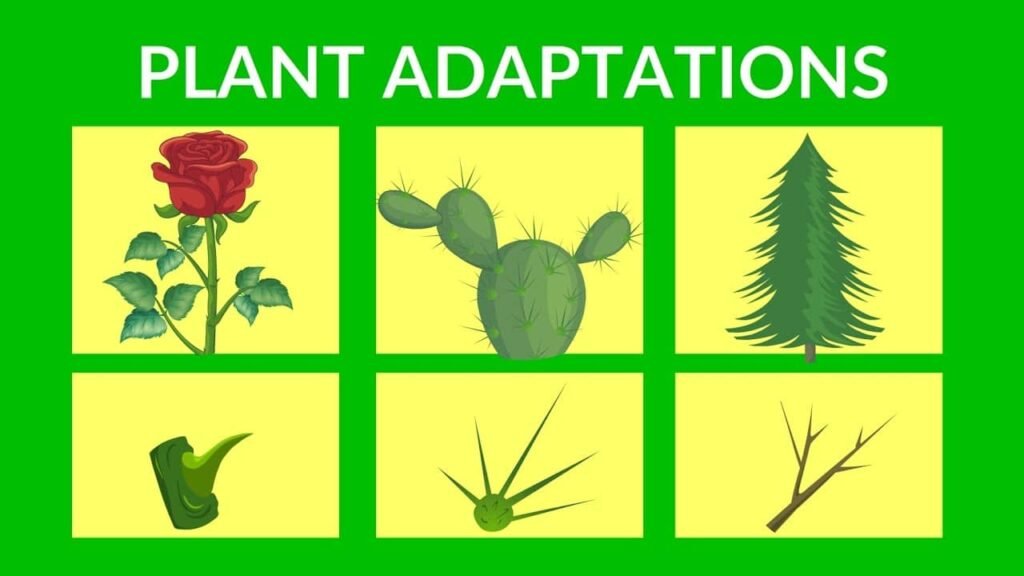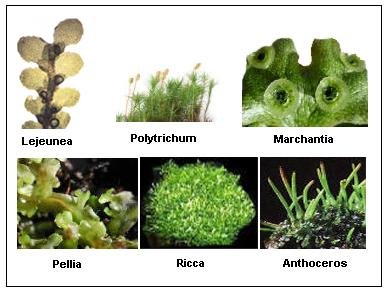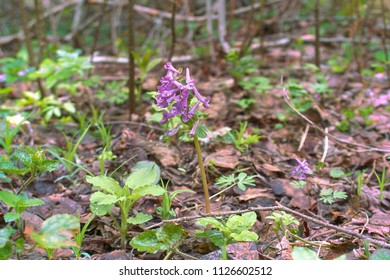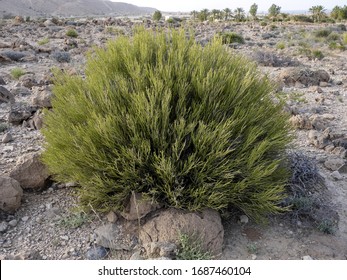
What is plant adaptation?
Definition: Adaptation may be defined as the fitness or adjustment of an organism (plants or animals) to its environment or habitat by changing morphological, anatomical, or physiological features.
Importance of adaptation:
- To survive that organization.
- For growth, development, and reproduction.
- To exploit natural resources efficiently.
- To perfect adverse environmental factors.
Examples of plant adaptation (Classification):
Plant adaptation based on habitat:
- Oxylophytes: acid-loving plant
- Heliophytes: sunlight loving plant
- Sciophytes: shade loving plant
- Psammophytes: grow on sand pienlatala
- Halophytes: salt-loving plant
- Lithophytes: grow on rock surface- Licken.
Plant adaptation based on water requirement:
- Hydrophytes: grow on water or excessive moisture
- Mesophytes: between hydrophytes and xerophytes, most of the plants of a country.
- Xerophytes: grow on the scariness of water.
- Halophytes: grow on salty soil. Plants of mangrove forest like Sundarbans.
Hydrophytic adaptation:

Morphological adaptation:
- Root: generally, poorly developed root system where root hair is absent and root pockets are present instead of the root cap.
- Stem: soft, succulent, spongy, and sometimes modified to offset (water hyacinth) or rhizome (water lily). (Soft stem protects a hydrophytic plant from the stress of water current.)
- Leaves: soft, succulent, sometimes very short (Hydrilla), sometimes very big (Water lily), heterophylly (two types of leaves on the same plant). E.g., Ranunculus aquatilis.
Anatomical adaptation:
- Generally, the cuticle is absent, especially in subaerial parts.
- The epidermis is thin and consisted of a single layer of parenchyma cells.
- Mechanical issues (i.e., sclerenchyma) are absent or poorly developed.
- Vascular tissues are poorly developed.
- Air cavities are present.
- To allow the plant to float on the water surface.
- To maintain gaseous exchange (photosynthesis, respiration).
Physiological adaptation:
- Water and nutrients are directly absorbed throughout the body.
- CO2 and O2 are stored in the air cavities used for photosynthesis and respiration purposes. Air cavities also allow floating on water.
- Mucilage materials are secreted from the mucilage channel, which helps to prevent the actions of microorganisms.
- Water potential is very high, therefore, low osmotic demand. Affinity to water is below such low osmotic demand.
- Water potential (maximum) means distilled water=0. (0, -1, -2, -3, -4 decreasing water potential more osmotic demand), and hydrophytes water potential near zero
Adaptive features of submerged hydrophytes:

Morphological features:
- Root system: absent, e.g., Ceratophyllum or, if present, functionless, only to act as anchorage with the soil. E.g., Hydrilla. Root hairs are absent, and the root cap is also absent.
- Stem: they have no well-developed stem. The stem is unbranched, long, slender, spongy, and flexible and can away with water current to and fro.
- The leaves are either absent or, if present, significantly reduced in size. They may be ribbon-shaped, thin, small, and translucent.
Anatomical features:
- The cuticle is absent. If present, poorly developed.
- There is excessive development of parenchyma and an elaborate system of air spaces (aerenchyma).
- Vascular bundles are absent. If present, poorly developed.
- There is no supporting tissue, i.e., sclerenchyma tissue is absent in the stem.
- In leaves, stomata are absent. If present, functionless.
Physiological features:
- Nutrients are absorbed throughout the plant surface, i.e., through the epidermis.
- Osmotic potential is low, very close to water.
- O2 and CO2 are stored in the air spaces and to be utilized when necessary.
- There is no transpiration from the submerged hydrophytes.
- They contain some mucilaginous substances throughout the plant body, only to protect them from being decayed underwater.
Adaptive features of floating hydrophytes:

Morphological features:
- The root may be absent. E.g., Wolffia microscopia (a rootless minutest duckweed). If present, produce short fibrous adventitious roots with root hairs. E.g., Spirodela. The root pocket is present instead of the root cap. Roots of floating hydrophytes show very poor development of root hairs. Roots of floating hydrophytes do not possess true root caps, but they often develop root pockets or root sheaths that protect their tips from injuries.
- The stem is very much reduced in most cases. E.g., Wolffia arhiza. In the case of the rooted type, it is modified in the rhizome. E.g., Typha, Vallisneria.
- Sometimes leaves are large with the long slender petiole. E.g., Nymphaea. In lotus (), plant petioles of leaves show indefinite power of growth, and they keep the lamina of leaves always on the surface of the water.
Anatomical features:
- The leaves and petioles contain numerous aerenchyma and air cavity.
- Lacking sclerenchymatous tissue or supporting tissue.
- The cuticle is absent.
- Stomata may be present on both surfaces of the leaves, but the frequency on the upper surface is higher than the lower surface or completely absent or, if present, functionless.
Physiological features:
- Osmotic potential is low, very close to water.
- Pigments are distributed throughout the body.
- Free-floating hydrophytes have an excessive rate of transpiration.
Adaptive features of amphibians:

Morphological features:
- The root system is adventitious in aquatic conditions, but it produces secondary and tertiary roots in terrestrial habitats.
- In some cases, heterophylly may also be developed.
Anatomical features:
- The cuticle is absent when growing in water or present when growing inland.
- The pericycle is present in mesophytic conditions but absent in dry conditions.
- Vascular bundles are well developed in mesophytic conditions but poorly developed the aquatic condition.
What are mesophytes?

Definition: Mesophytes are those plants that require a medium supply of water, and they stand between hydrophytes, and xerophytes lack specific adaptations. E.g., maximum of our cultivated crops which do not need lack of water or abundant of water except for rice and jute which need excess water.
Deepwater rice is a mesophyte but contains some characteristics of hydrophytes as well as jute. The Root character of hydrophytes may deposit oxygen in the roots. Some of the essential morphoanatomical features are given below:
- The root system is well developed; roots are fairly branched and contain root cap and root hair.
- Leaves are generally aerial, broad, thin, and varied in shape. They are green and lack hairy or waxy coatings.
- Stems are generally aerial and branched.
- In all aerial parts, the cuticle is moderately developed.
- The epidermis is well developed and has no chlorophyll.
- Stomata are generally present on both surfaces of leaves.
- Mesophyll in leaves is differentiated into palisade and spongy parenchyma.
- Well-developed vascular bundles and mechanical tissues are well differentiated.
- Mesophytes may exhibit temporary wilting during noon hours.
Mesophytic adaptation:
Morphological features:
- Root: well developed, branched, presence of root hairs and rootlets. Rice – adventitious, fibrous, fiber-tap root system.
- Stem: some are erect, some are prostate, some are branched, some are woody, some are soft and succulent.
- Leaves: may vary from plant to plant, but well developed. Monocot – erect, isobilateral, more stomata on the upper surface, Dicot – dorsiventral, not erect, more stomata on the lower surface.
Anatomical character and physiological character: middle between hydrophytes and xerophytes.
What are xerophytes?

Definition: Xerophytes may be defined as those plants that can grow under the scarcity of water. Xerophytes are the native plants of the desert, high altitude, polar region, or salt marshes. Xerophytes are not drought-loving plants, but situations bond them to grow in drought areas. Drought is of two types:
- Physical drought: when water is absent.
- Physiological drought: water is present but not available. E.g., plants of mangrove forests.
Reasons for physiological drought:
- Osmotic demand is more in soil than in plants.
- Water as ice.
- High acidic soil.
Classification of xerophytes:
- Drought escaping plants: these plants are short-lived, i.e., they can complete their lifecycle within a brief period. It rains at any time of the year, even for a short period, and they germinate immediately and complete their life cycle within this short period (4-6 weeks). Functionally, these plants escape drought. The above-ground parts die during unfavorable conditions, but below-ground parts remain alive.
- Drought evading plants: These are small-sized plants having limited growth. They absorb minimum soil moisture, which is available to their reach, and thus, they spend the period of drought using the collected water and controlling the growth and size of their body.
- Drought enduring plants: They are large shrubs of deserts. When water is unavailable in the soil, they become weak and shed their leaves in unfavorable conditions. Thus, they reduce the rate of transpiration. Under this condition, if a plant does not die, the growth is arrested and regrowth following rain.
- Drought resistant or true xerophytes: the plants have a well-developed root system to collect water. They have a special organ to store water. These plants are of two types:
- Succulent xerophytes: Those plants with an organ store water, and during drought, internal water is used. E.g. Agave, Opuntia etc.
- Non-succulent xerophytes: these plants are relatively harder, dry, and can withstand/combat drought very effectively.
Xerophytes plants are further classified on the basis of their habitats as follows:
- Oxylophytes (on acid soils)
- Halophytes (on saline soils)
- Lithophytes (on rocks)
- Psammophytes (on sand and gravels)
- Chersophytes (on wasteland)
- Eremophytes (on deserts and steppes)
- Psychrophytes (on cold soils)
- Psilophytes (savannah)
- Sclerophytes (Forest and bushland)
Xerophytic adaptation:
Types:
- Drought escaping plants: life cycle is completed within a brief period.
- Drought evading plants: they reduce their individual group.
- Drought enduring plants: they shed their leaves or maybe wilted during a shortage of water.
- Drought-resistant plants or true xerophytes: They successfully survive drought conditions.
- Succulent xerophytes: they deposit water and use it in adverse environmental conditions.
- Non-succulent xerophytes: thuja, arocaria.
Morphological adaptation:
- Root: highly developed, strong, branched with more or less root hairs, deep penetrating. If shallow, they are profusely branched (usually succulent deep penetrating non-succulent).
- Stem: well developed, branched, stout, strong, sometimes modified to a special structure. Such as Phylloclade (function of the leaf).
- Leaves: modified into spines, thorns, scales, hairs, bristles, small, thick, sometimes they make roots (they need to reduce their surface area because they need to tackle transpiration losses of water).
Anatomical adaptation:
- Cuticle is thick
- To check transpiration losses
- To check lodge down
- The epidermis is usually multilayered
- To check transpiration.
- To remain strong.
- Mechanical tissues (collenchyma, sclerenchyma) are prominent to support strong.
- Vascular bundles are usually well developed
- To draw low water efficiently.
- To draw nutrients efficiently.
- Stomata are sunken and provided with hairs. Generally, stomata are situated on the lower surface of leaves.
- Palisade parenchyma tissues are compactly arranged.
Physiological adaptation:
- The transpiration rate is very low (it is the essential physiological adaptation of xerophytes).
- Water potential is low, and osmotic demand is high.
- Pentose is formed by the breakdown of polysaccharides which have a strong bindle ability to water.
All xerophytic based on these characters occurs their adaptation xeroplastic character (those that are environmentally controlled. They reduce their leaf size and body size) and xeromorphic character (those genetically controlled characters). E.g., sunken stomata provide hairs on lower surfaces).
Adaptive features of succulent xerophytes:
Morphological features:
- Root systems are not so deeply penetrated and extend in the upper surface of the soil. So, they absorb water from the upper soil surface.
- Stems are modified into Phylloclade, and stem acts as a function of leaves.
- Leaves are thick and succulent and sometimes covered with a waxy coating to reflect incident radiation.
Anatomical features:
- The cuticle is thick to check the transpiration.
- Palisade parenchyma tissues are very compact. So, water cannot go out easily.
- Vascular bundles are well developed.
Adaptive features of non-succulent xerophytes:
Morphological features:
- Root systems are lightly developed and deeply penetrated to extract water from the different strata of soil.
- Stems are stout, short (in most cases) and woody, surrounded by thick bark.
- Leaves are modified into spines, thorns, scales, bristles. In some cases, especially in grasses, they tend to fold their leaves during drought. Sometimes leaves are covered with a waxy coating to reflect incident radiation.
Anatomical features:
- The cuticle is thick.
- The epidermis is multilayered and compact.
- Vascular bundles are highly developed.
- Palisade parenchymatous tissues are very compact.
- Stomata are sunken and provided with hairs.
- The cell wall is thickened, cell sizes are small and densely arranged with very few intercellular spaces.
- They have enough mechanical tissues to prevent wilting.
Physiological features:
- The transpiration rate is very low when water is scarce.
- Osmotic demand is very high due to the high sap concentration of cells.
- They preserve water inside their body (in the case of succulent xerophytes) which is economically used during drought.
What are halophytes:
Definition: Halophytes may be defined as those plants grow in saline conditions, and they are the plants of mangrove forests. E.g. sundari, golpata, goran etc.
Halophytic adaptation:
Morphological adaptation:
- Root: well developed, branched, not profoundly penetrated, and usually distributed within the upper surface of the soil. Two types of roots are found:
- Breathing roots or Pneumatophores help in respiration and
- Pop roots or stilt roots provide mechanical support for plants.
- Stem: well developed, branched, hard, strong, woody, not so much tall (lack of support near the sea and the wind flow is strong).
- Leaves: well developed, succulent, glabrous. Do not absorb water from the soil all the time. During heavy water flow, they deposit water in their leaves. Another reason is low transpiration demand.
Anatomical adaptation:
- A thick cuticle and waxy layer are present.
- The epidermis is multilayered.
- Palisade parenchyma tissues are compactly arranged, and intercellular spaces are absent.
- Stomata are confined to the lower epidermis.
- Mechanical tissues are well developed.
- Vascular bundles are well developed.
- Air cavities are present in the cortex of roots.
Physiological adaptation:
- New Pneumatophores perform root respiration.
- Reproduction takes place through viviparous (the seeds germinate while still attached to the parent plant).
- Pop roots tackle the force caused by tidal flow.
- Transpiration demand is low.
- Water potential is low, but osmotic demand is high.
- Most of the water is absorbed during the rainy season when salt concentration becomes minimum.

